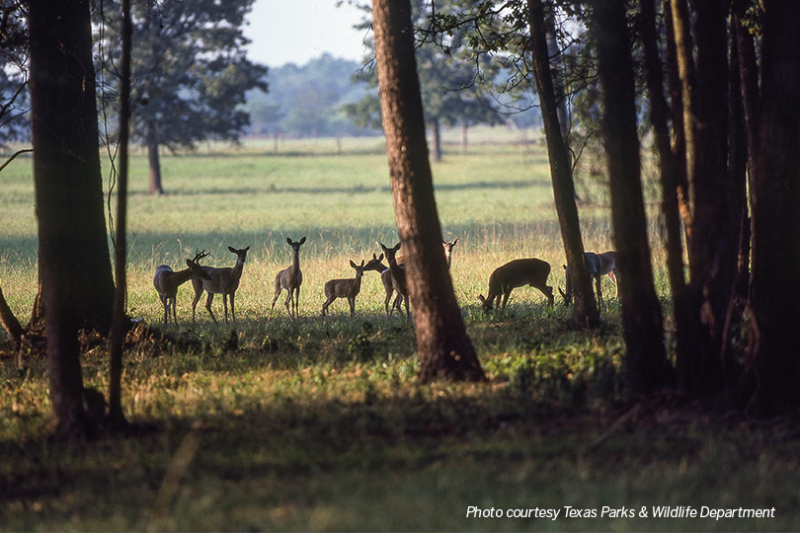After SARS-CoV-2 (COVID-19) was first documented in wild deer populations in 2021, researchers at Texas A&M University’s College of Veterinary Medicine and Biomedical Sciences set out to determine how the disease is transmitted among captive white-tailed deer populations.
Their research points to deer-to-deer transmission as the most likely source of transmission, according to Dr. Sarah Hamer, associate professor of epidemiology and the study’s principal investigator.
“At the start of the pandemic, my research team became interested in the potential role of animals in transmission. Since early summer 2020, we’ve been studying dogs and cats, and I can tell you those types of animal infections are not hard to find,” she said in an interview with Texas Farm Bureau Radio Network. “Determining whether the captive cervid populations could play a role in transmission cycles became of interest to us. Captive cervids are very important to Texans for economic and recreational reasons and it sparked our interest.”
After studying three independent captive deer breeding facilities in Central and South Texas, the group found more than 90% of the deer at one tested positive for the virus.
That facility’s owner and manager was known to have contracted COVID-19, making it an ideal location for the research, said Dr. Walt Cook, Texas A&M clinical associate professor.
“We thought, ‘If there’s ever going to be deer that get infected, those would be the ones,’” he said. “And 34 out of 36 deer were sero-positive for SARS-CoV-2 in this one facility. We don’t have direct evidence, but the evidence we do have seems to indicate the virus was transmitted from humans initially and then from deer to deer.”
A group of deer at the facility was in close physical contact with infected humans through routine handling and later tested positive for COVID-19 antibodies. Those deer had only what Cook called “fence-line contact” with other deer not handled by humans, but the second group subsequently also tested positive later, suggesting the disease was transmitted from the deer on the other side of the fence.
“Not all of the positive deer had direct human contact in the past that could explain their infection, so our story here with these captive cervid facilities in Texas, much like other researchers studying deer across the country, seems to point to deer-to-deer transmission,” Hamer said.
Deer infected with COVID-19 show no clinical symptoms or signs of respiratory disease.
Hamer noted they do not yet know if deer can transmit the virus back to humans.
There is much to learn about cross-species transmission of the virus, including whether COVID-19 can be transmitted from one species of animal to another, such as deer to cattle or rodents to medium-sized mammals.
“It’s certainly a public health priority to figure out if infected animals can infect people,” she said. “I think our collaborative team at Texas A&M would like to do some longitudinal studies to understand how their level of antibody titers change over time.”
There is no evidence the SARS-CoV-2 virus can be transmitted to humans from properly-cooked venison meat, according to Texas A&M Veterinary Medical Diagnostic Laboratory Assistant Agency Director Dr. Terry Hensley.
“Venison is a lean, healthy red meat,” he said. “The accepted recommendation is that venison be cooked to a minimum internal temperature of 145 degrees for steak and 165 for ground venison. This should destroy any pathogen, so again there is little to no risk of transmission.”
A publication from Texas A&M AgriLife Extension Service has more information on tools and steps to process deer carcasses properly and safely.

